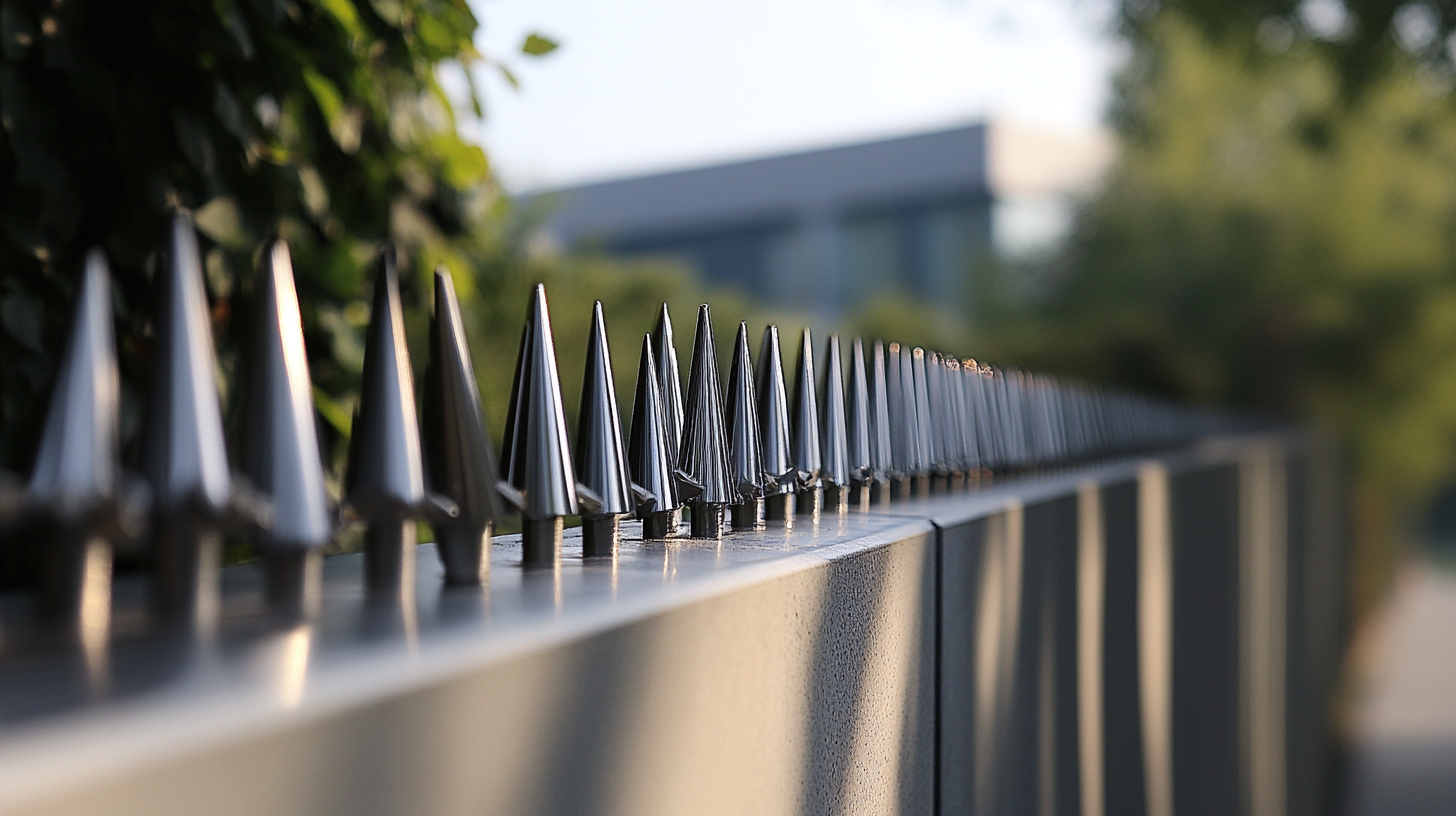
 Bird & Pigeon Pest Control
Bird & Pigeon Pest Control  Mice & Rat Pest Control
Mice & Rat Pest Control  Mole & Vole & Gopher Pest Control
Mole & Vole & Gopher Pest Control  Fly Insect Pest Control
Fly Insect Pest Control  Wasp & Bee Pest Control
Wasp & Bee Pest Control  Moth Pest Control
Moth Pest Control  Mosquito Pest Control
Mosquito Pest Control  Cockroach Pest Control
Cockroach Pest Control  Wildlife Pest Control
Wildlife Pest Control  Snake Pest Control
Snake Pest Control  Bed Bug & Flea Pest Control
Bed Bug & Flea Pest Control  Snail & Slug Pest Control
Snail & Slug Pest Control  Ant & Termites Pest Control
Ant & Termites Pest Control  Spider Pest Control
Spider Pest Control  Other Insect Pest Control
Other Insect Pest Control  Garden Products
Garden Products  Blog
Blog Urban environments are often challenged by the presence of pest birds, which can cause property damage, health hazards, and public nuisance. To tackle this issue effectively, many cities are increasingly turning to innovative solutions that not only deter unwanted avian visitors but also enhance the appearance of urban spaces. One such solution is the use of Stainless Steel Bird Spikes. These durable and aesthetically pleasing deterrents are designed to prevent birds from roosting or perching on buildings, ledges, and other surfaces while seamlessly blending into the urban landscape. In this blog, we will explore the practical applications of Stainless Steel Bird Spikes, examining their effectiveness in pest control and their role in improving the overall aesthetics of urban settings. By understanding the benefits and implementation of these spikes, property owners and city planners can create more hygienic and visually appealing environments for everyone.

In urban environments, effective pest control is crucial for maintaining public health and enhancing the quality of life. Rodents, in particular, pose significant health risks, as they are known carriers of diseases such as hantavirus and leptospirosis. A review suggests that sustainable control of urban rat infestations should encompass larger areas of urban centers, indicating a need for systematic approaches rather than ad-hoc solutions. This interconnectedness of urban planning and pest management reflects the broader aim of improving urban ecosystem services, which are vital for overall community wellbeing.
Moreover, the use of stainless steel bird spikes serves as a practical application in pest control, effectively deterring pest birds that can carry diseases and cause structural damage. By integrating functional solutions like these into urban green infrastructure, cities can not only bolster their pest management strategies but also promote biodiversity. The effective use of bird spikes minimizes reliance on pesticides, which, while essential in many circumstances, pose risks to non-target species, particularly pollinators in urban landscapes. As urban areas evolve, employing adaptive management methodologies that prioritize ecological health and pest control is key to resilient urban ecosystems.

Stainless steel bird spikes, widely used as a preventative measure against avian pests, have recently encountered an unexpected challenge. A study conducted by Dutch researchers reveals that clever crows and magpies have started using these anti-bird spikes as materials for their nests. This counterproductive behavior highlights an intriguing aspect of urban wildlife adaptability. These birds have been observed stealing the very spikes intended to keep them away, utilizing them to create fortified nests that not only protect their chicks but also showcase their ingenuity in overcoming human-imposed obstacles.
The installation of stainless steel bird spikes is common in urban environments, particularly in areas prone to pest infestations. According to industry reports, such spikes can be incredibly effective in deterring various bird species when installed correctly. However, with birds now co-opting these deterrents for nesting purposes, pest control strategies must evolve. As urban wildlife continues to adapt, professionals in the pest control industry are challenged to find innovative solutions to maintain effective bird control. Understanding this behavior can lead to a reconsideration of materials and methods used in bird management, ensuring that efforts in urban pest control remain effective in the face of nature's cunning strategies.

Bird spikes are an innovative solution that enhances urban spaces while effectively addressing pest control challenges. In public areas such as parks, plazas, and commercial buildings, these spikes serve as a deterrent to birds that often create disturbances and health risks through nesting and droppings. By strategically installing stainless steel bird spikes on ledges, roofs, and other surfaces, cities can maintain cleaner environments while preserving the aesthetic appeal of their architecture.
The practical application of bird spikes goes beyond mere pest control; they also promote safety and comfort for visitors. In crowded urban settings, birds can create unsanitary conditions and present hazards to public wellbeing. Stainless steel bird spikes are not only durable and weather-resistant but also blend seamlessly into the urban landscape, providing an unobtrusive solution to the bird problem. As local governments and businesses increasingly prioritize sustainable and effective pest management strategies, incorporating bird spikes into urban design represents a proactive step toward enhancing public spaces.
| Application Area | Pest Type | Effectiveness | Maintenance | Cost |
|---|---|---|---|---|
| Roof Edges | Pigeons | High | Low | $$ |
| Balconies | Sparrows | Medium | Medium | $ |
| Public Parks | Seagulls | High | Low | $$$$ |
| Shopping Malls | Starlings | Very High | Medium | $$$ |
| Street Signs | Crows | Medium | Very Low | $ |
Stainless steel bird spikes have emerged as a practical solution for urban pest management, offering a range of benefits that contribute to both aesthetic and functional improvements in cityscapes. One of the key advantages of using stainless steel is its durability. Unlike plastic options, which can degrade and lose effectiveness over time, stainless steel withstands harsh weather conditions and is resistant to corrosion. This longevity not only reduces the need for constant maintenance and replacement but also ensures that urban environments remain pest-free year-round.
In addition to durability, stainless steel bird spikes are environmentally friendly. Their reusable nature means less waste is generated compared to disposable pest control methods. As cities increasingly adopt sustainable practices, incorporating stainless steel solutions aligns perfectly with these values. Furthermore, the sleek design of stainless steel fittings contributes to the modern aesthetic of urban architecture, allowing for effective pest control without compromising visual appeal. By investing in stainless steel bird spikes, cities can address pest problems efficiently while championing sustainability.
When planning for effective bird exclusion services, one of the key considerations is the strategic placement of stainless steel bird spikes. These spikes serve as a physical barrier that discourages birds from perching, nesting, or roosting in urban spaces. It’s critical to assess the specific areas that require attention, such as ledges, rooftops, and other potential nesting spots. By evaluating the behavior patterns of local bird species, service providers can identify high-risk locations and tailor their installation of bird spikes accordingly.
Case studies show that successful implementations of bird spikes not only involve careful selection of materials but also necessitate a well-thought-out installation process. For instance, ensuring that spikes are mounted at the correct angle and height can significantly enhance their effectiveness. Additionally, regular maintenance and inspections can help address any wear and tear, ensuring long-term success in pest control. By adopting these practical tips and focusing on a proactive approach, urban spaces can be effectively safeguarded against unwanted bird populations.

